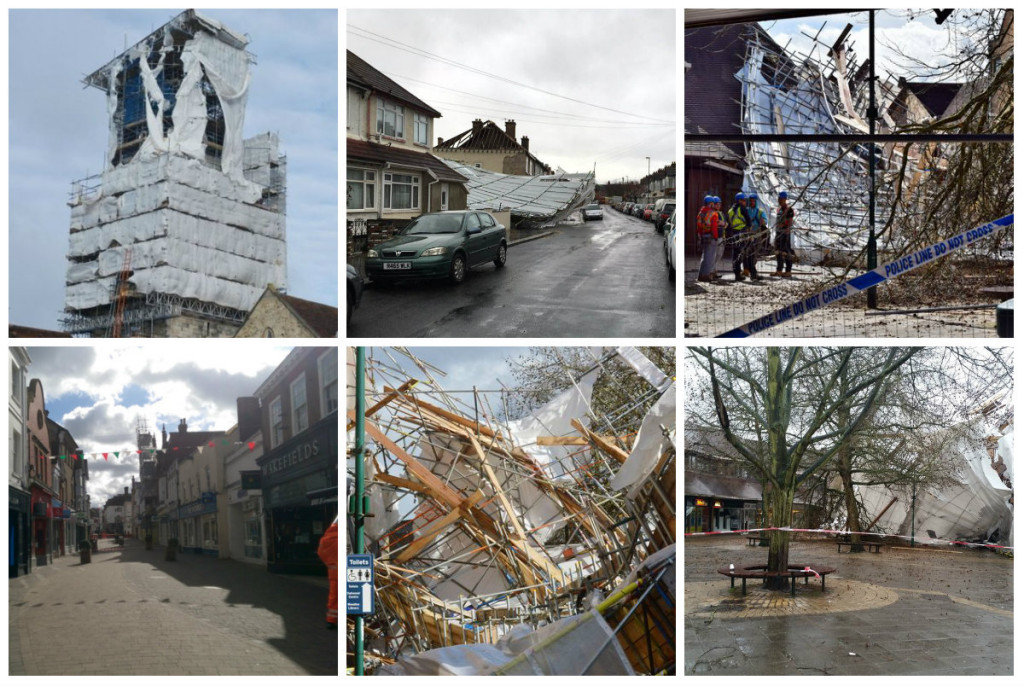Storm Katie Wreaks Scaffolding Havoc
29th March 2016
Storm Desmond landed in the UK in early December and was one of the most destructive storms to ever hit the North West, with its effects still being felt long after the winds had subsided. Storm Eva caused more misery over Christmas, with Storm Frank making it an unhappy New Year for many. Hot on the heels of Storm Gertrude, Henry, Imogen and Jake arrived and this was followed up by the latest storm, ‘Katie’, with winds of up to 100 mph reportedly hitting some areas.

With those high winds come the almost inevitable reports of scaffold damage and collapses, the most significant of which was in a Berkshire shopping area, where a fairly large scaffold collapsed into the precinct during the early hours of Monday morning. There are no reported injuries, but had the timings been different, the consequences could have been far worse.
It goes without saying that high winds are the one of the direct causes of scaffold failures in these instances, but with some pre-planning and consideration of of the industry guidance that is available, almost all are preventable.
The primary standards that consider scaffold stability for UK scaffolds are the NASC publications TG20:13 ‘A Comprehensive Guide to Good Practice for Tube and Fitting Scaffolding’ and TG4:19 ‘Anchorage Systems for Scaffolding’. Both standards provide high levels of detail to ensure scaffold stability and adhering to the recommendations therein will ensure scaffolds remain stable.
TG20:13 provides a range of ‘compliant’ or ‘non-complex’ scaffolds and the TG20 eGuide will produce compliance sheets that confirm bespoke design is not required and also provides detail on the quantity and capability requirements of the ties, based on the area in which it is constructed and the topography of the land upon which the scaffold is situated.
Scaffolds requiring bespoke design, i.e. those outside the scope of TG20:13, should be constructed in strict accordance with the Design Engineer’s specification and the detail provide should also include tie locations, loadings and test requirements. For more on scaffold design requirements, please refer to this link.
In addition to design and build requirements for scaffolding, scaffold users should also ensure that a thorough inspection regime is implemented as this will assist in identifying any issues that could contribute towards scaffold instability. Independent inspections are preferred and they should be carried out by individuals not involved in the erection works.
Consideration of the points above will ensure that when storms Clodagh, Desmond, Eva, Frank, Gertrude and Henry etc arrive, you’ll be well prepared for what they bring!
Simian clients requiring further advice on scaffold stability are free to contact their Account Manager on 0345 602 2418. (Option 1)
